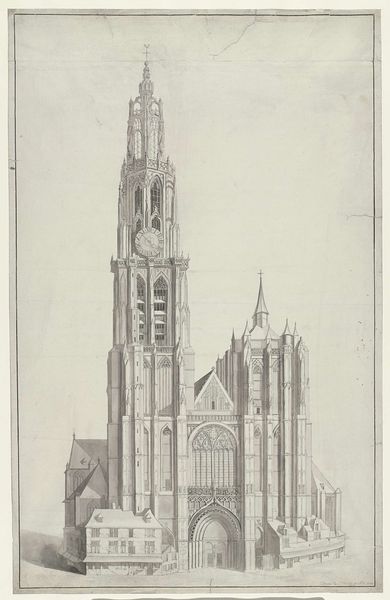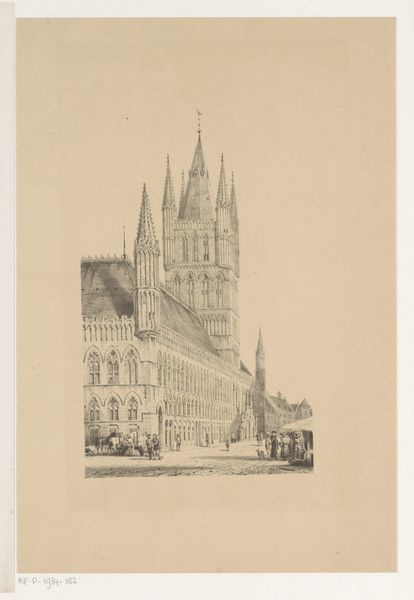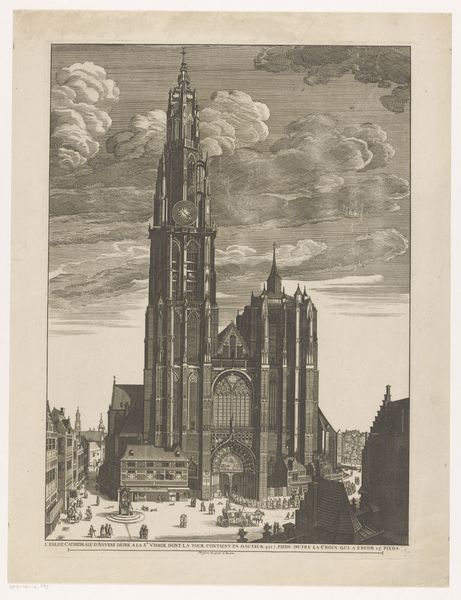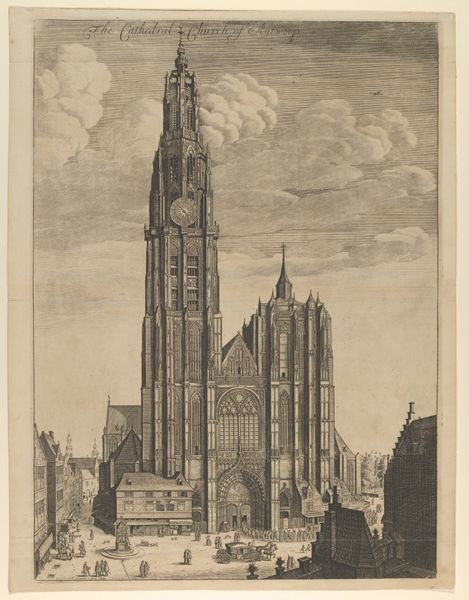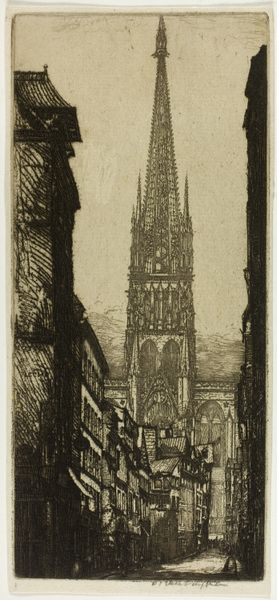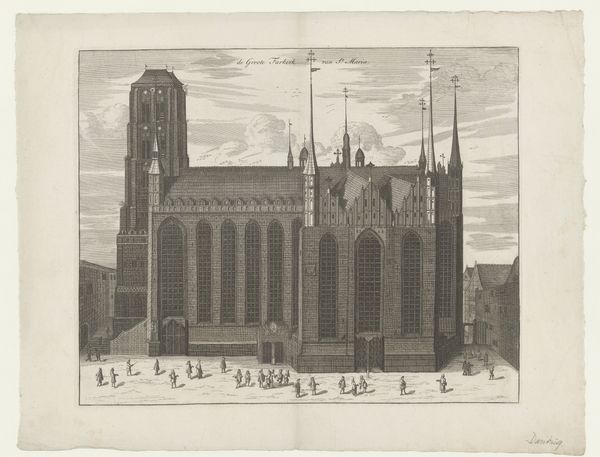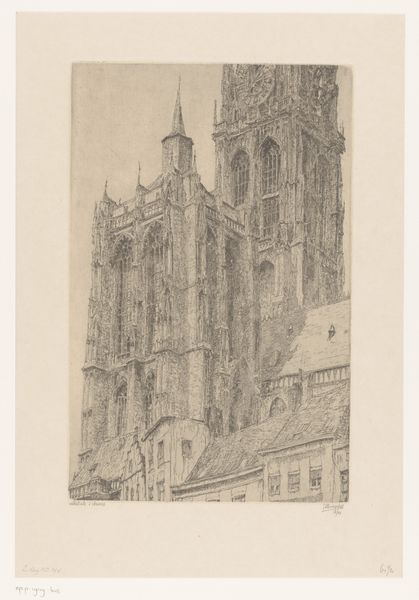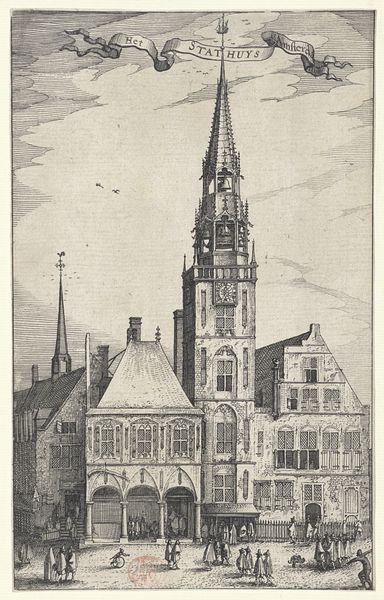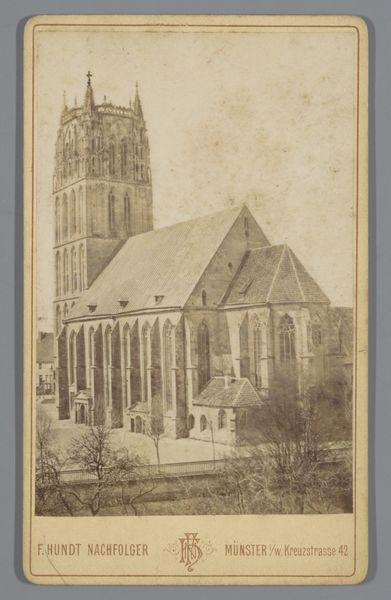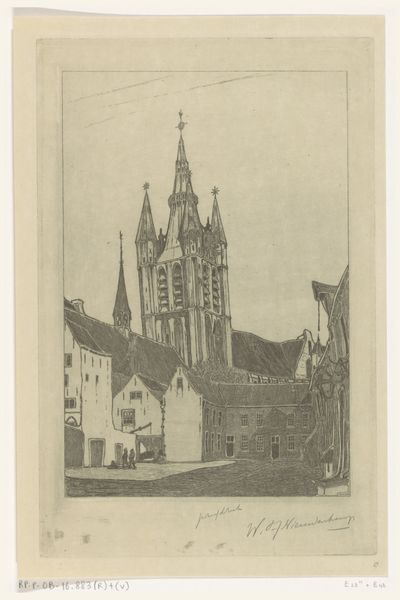
print, etching, architecture
#
light pencil work
# print
#
etching
#
pencil sketch
#
old engraving style
#
landscape
#
cityscape
#
architecture
#
realism
Dimensions: height 322 mm, width 225 mm
Copyright: Rijks Museum: Open Domain
Curator: What a brooding yet meticulous cityscape. It’s got this wonderfully antiquated feel, all grays and blacks. Editor: Indeed. What we’re looking at is a print – specifically an etching – by Pieter Dupont, dating back to 1906. The artwork's title is "Grote of Sint-Laurenskerk in Rotterdam", and as the title suggests, it captures a perspective of the Laurenskerk, a late-Gothic church, quite prominent in Rotterdam. Curator: Yes, a real behemoth! It towers, almost menacingly, rendered with such sharp detail. All those tiny etched lines create a texture that feels both solid and ephemeral, like memory itself. The way the church looms, you can feel its presence—its weight bearing down on the city. Editor: You've hit on something essential, there: the interplay between presence and time. Rotterdam, of course, endured horrific bombing during World War II, altering its urban landscape permanently. Dupont’s etching becomes a pre-war visual record, a symbol of what was and a challenge to what became. The church is rendered meticulously, a testament to permanence amidst undeniable, inevitable change. Curator: That somber reading definitely enriches the symbolism! But there's a hopeful undertone to me too. These houses of worship symbolize continuity. Even now, churches evoke gatherings. It’s like the buildings hold communal stories in their very stones. It transcends loss. Editor: A potent reminder that the physical architecture provides both stability, a center, but also signifies hierarchies and power dynamics. It makes me think about the ways that sacred spaces can simultaneously offer solace and also reflect structures of authority that perpetuate inequity. Curator: I see what you're saying, a dialogue with a city constantly being reformed and remembered, represented in etched lines! A way to preserve this space. Editor: Exactly, Pieter Dupont offers us this particular perspective from his moment, the Laurenskerk stands—or rather, looms, reminding us of complex histories, architectural stories, and societal challenges embedded in stone. It speaks of loss and rebirth, an old story indeed. Curator: It’s a visual poem about urban life, encoded with memory. Sobering, really, the permanence we try to impose upon the world is ultimately vulnerable. Editor: Agreed. There's something profoundly poignant about the enduring presence and continuous adaptation reflected here in the Grote of Sint-Laurenskerk.
Comments
No comments
Be the first to comment and join the conversation on the ultimate creative platform.
